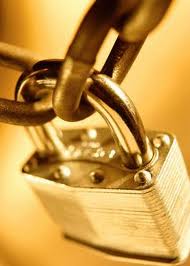Do you store your accounts id ,password or any other confidential info in plain text? If you say yes, You must read this article.
Risks of Storing confidential data in Plain Text:
- Your friends or any other who has access to your pc are able to view your confidential data. Because it is in simple text.
- Malwares/spywares are able to send the data file from your pc to Attackers system. This time your data are really in risk.
- If you have any confidential files(Eg: important company projects) without passwords , others may get access to your pc and steal the information.
So Here i am going to introduce a new Security Tools known as TrueCrypt(Best and my favorite tool).
What is TrueCrypt?
TrueCrypt is a software system for establishing and maintaining an on-the-fly-encrypted volume (data storage device). On-the-fly encryption means that data is automatically encrypted right before it is saved and decrypted right after it is loaded, without any user intervention. No data stored on an encrypted volume can be read (decrypted) without using the correct password/keyfile(s) or correct encryption keys. Entire file system is encrypted (e.g., file names, folder names, contents of every file, free space, meta data, etc)
More info about TrueCrypt:
Files can be copied to and from a mounted TrueCrypt volume just like they are copied to/from any normal disk (for example, by simple drag-and-drop operations).Files are automatically being decrypted on the fly (in memory/RAM) while they are being read or copied from an encrypted TrueCrypt volume. Similarly, files that are being written or copied to the TrueCrypt volume are automatically being encrypted on the fly (right before they are written to the disk) in RAM.
Note that this does not mean that the whole file that is to be encrypted/decrypted must be stored in RAM before it can be encrypted/decrypted. There are no extra memory (RAM) requirements for TrueCrypt.
Let's suppose that there is an .avi video file stored on a TrueCrypt volume (therefore, the video file is entirely encrypted). The user provides the correct password (and/or keyfile) and mounts (opens) the TrueCrypt volume. When the user double clicks the icon of the video file, the operating system launches the application associated with the file type – typically a media player. The media player then begins loading a small initial portion of the video file from the TrueCrypt-encrypted volume to RAM (memory) in order to play it. While the portion is being loaded, TrueCrypt is automatically decrypting it (in RAM). The decrypted portion of the video (stored in RAM) is then played by the media player. While this portion is being played, the media player begins loading another small portion of the video file from the TrueCrypt-encrypted volume to RAM (memory) and the process repeats. This process is called on-the-fly encryption/decryption and it works for all file types (not only for video files).
Note that TrueCrypt never saves any decrypted data to a disk – it only stores them temporarily in RAM (memory). Even when the volume is mounted, data stored in the volume is still encrypted. When you restart Windows or turn off your computer, the volume will be dismounted and files stored in it will be inaccessible (and encrypted). Even when power supply is suddenly interrupted (without proper system shut down), files stored in the volume are inaccessible (and encrypted). To make them accessible again, you have to mount the volume (and provide the correct password and/or keyfile).
Main Features:
- Creates a virtual encrypted disk within a file and mounts it as a real disk.
- Encrypts an entire partition or storage device such as USB flash drive or hard drive.
- Encrypts a partition or drive where Windows is installed (pre-boot authentication).
- Encryption is automatic, real-time (on-the-fly) and transparent.
- Parallelization and pipelining allow data to be read and written as fast as if the drive was not encrypted.
- Encryption can be hardware-accelerated on modern processors.
- Provides plausible deniability, in case an adversary forces you to reveal the password: Hidden volume (steganography) and hidden operating system.



